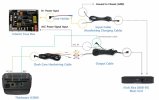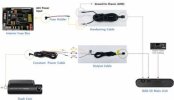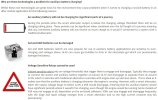AEMontoya
New Member
Do external battery packs sold to power dashcams charge and draw current from the car's starter battery ONLY when the engine is running and the alternator is supplying ~14.6 V? Or do external battery packs begin charging and drawing 7-10 A of current from the main battery simply when accessories are turned on, regardless of whether the engine is turned on or not?
I'd hate to think that if I wanted to charge my cell phone via the 12V socket, or needed to fill up with an air compressor after patching a tire, that I'd end up draining my starter battery due to an external battery pack pulling a bunch of current. Obviously, I could avoid the issue by starting the engine every time I wanted to power an onboard accessory; but, is that really practical? I assume that these external battery packs sold for dashcams have a BMS that only allows them to charge when they see ~14.6 V from an alternator, but no one, including the dashcam battery manufacturers seems to have an answer. Strange ...
I'd hate to think that if I wanted to charge my cell phone via the 12V socket, or needed to fill up with an air compressor after patching a tire, that I'd end up draining my starter battery due to an external battery pack pulling a bunch of current. Obviously, I could avoid the issue by starting the engine every time I wanted to power an onboard accessory; but, is that really practical? I assume that these external battery packs sold for dashcams have a BMS that only allows them to charge when they see ~14.6 V from an alternator, but no one, including the dashcam battery manufacturers seems to have an answer. Strange ...
















